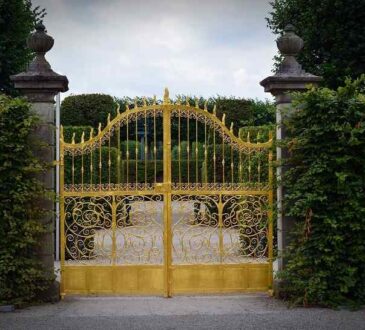
Are you a landscape architect looking for innovative ways to elevate your projects? Modern landscape paving techniques may be the answer you’ve been looking for. This guide aims to explore the state-of-the-art principles, materials and methods that can transform any outdoor space into a stunning work of art.
The Role of Paving in Modern Landscape Design
Paving indeed is practical, but it holds much more than that; it is indeed art. A paving can create a definite character for a design to better blend with its surroundings. For now, paving is considered an important element of landscape architecture as this could be matched with the best visually striking patterns and textures. With all these being said, functionality and aesthetic aspects make it a crucial component in modern landscape design, so designers must understand how to utilize different paving techniques for creating unique outdoor spaces that captivate and inspire.
Traditional vs. Modern Paving Techniques
Traditional Paving Methods: Historically, paving has relied on natural stone and brick due to its durability and timeless appeal. These materials bring a classic touch but often lack the flexibility and innovation found in modern techniques. While traditional methods are still valued, they can limit a designer’s creative expression.
Modern Innovations: Modern paving techniques incorporate new materials such as concrete, porcelain, and permeable pavers that offer more design flexibility. These materials come in a variety of shapes, colors, and textures, allowing for endless creativity. Innovations in technology have made it possible to mimic natural materials while enhancing durability and sustainability.
Blending the Old and the New: Combining traditional and modern techniques can yield stunning results. Designers can preserve the timeless beauty of traditional materials while benefiting from the versatility and eco-friendliness of modern innovations, such as asphalt services like those in Utah. This hybrid approach offers the best of both worlds, catering to clients who appreciate both tradition and modernity.
Exploring Eco-Friendly Paving Materials
The Rise of Sustainability: Landscape designers across the globe are opting for sustainable materials that reduce environmental impact. Eco-friendly paving solutions include materials like recycled concrete, permeable pavers, and grass pavers, which help manage water runoff and support green infrastructure.
Permeable Pavers: These are designed to allow water to pass through and soak into the ground, reducing surface runoff and improving water management. Permeable pavers are ideal for driveways, patios, and walkways in eco-conscious projects.
Recycled Materials: Using recycled materials such as crushed glass and asphalt not only minimizes waste but also adds unique colors and textures to paving designs. These materials are perfect for projects that aim to achieve sustainability while maintaining aesthetic beauty.
Incorporating Modern Paving into Landscaping Projects
Assess the Site: Begin by evaluating the landscape to determine suitable materials and techniques. Consider factors such as climate, soil type, and intended use to select the best paving solutions.
Design with Intention: Use paving to complement the overall design theme. Whether aiming for a minimalist look or a vibrant garden, choose materials and layouts that align with the project’s vision.
Execute with Precision: With a clear plan in place, execution is critical. Ensure that installation follows best practices for long-lasting results. Proper preparation and skilled labor are essential to prevent issues such as shifting or water pooling.
Maintenance Tips for Paved Landscapes
Regular Cleaning: To keep paving materials looking new, regular cleaning is essential. Sweep debris and wash surfaces to prevent staining and damage.
Sealing and Repairs: Periodically seal porous materials like concrete to protect against weathering. Address any cracks or gaps promptly to maintain structural integrity.
Eco-Friendly Practices: Use environmentally friendly products for cleaning and maintenance to preserve the eco-friendly essence of the project and prevent harm to surrounding plants and wildlife.
Conclusion
Now that you have a deeper understanding of modern landscape paving techniques, it’s time to unleash your creativity and transform outdoor spaces into works of art. By blending traditional and modern methods, using eco-friendly materials, and incorporating paving with intention, designers can elevate any project to the next level.




